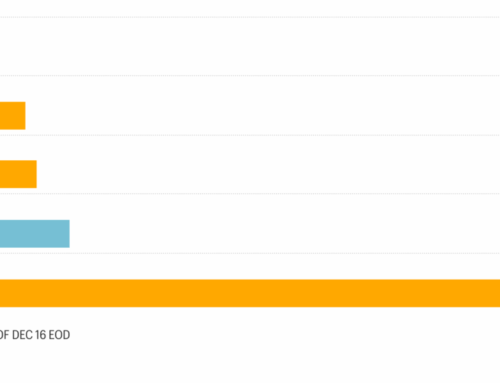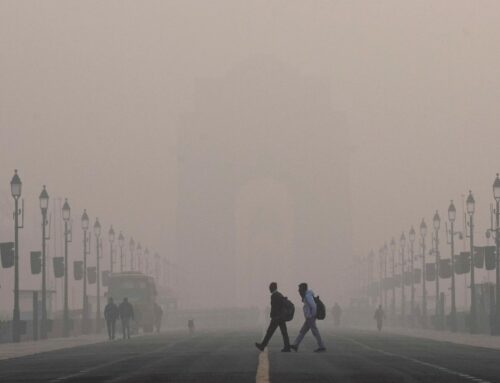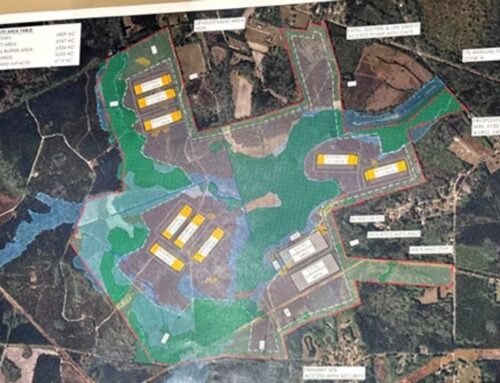We’re still winning the climate fight. Yes, really.
April 21, 2025
The Trump administration came to power and promised to shift the US’s energy policy to one centered on the mantra “drill baby drill.”
That raised the question — will President Donald Trump undo all the progress the US has made in recent years transitioning to renewable energy?
To find the answer, Vox’s climate and tech teams worked for weeks reporting a series of stories all about where the world stands with respect to renewable energy technologies, what might hasten or slow progress, and what the green revolution will really look like.
They found that humanity has reached what they call “escape velocity” when it comes to the green energy revolution. I recently talked with climate editor Paige Vega about how her team came to this conclusion, and what it means for the future.
Check out all the excellent Escape Velocity stories here! I hope this Q&A brings additional insights.
Where are we right now with energy under the new Trump administration?
Donald Trump’s administration has made several moves to dismantle a suite of environmental regulations and really slow down climate progress, including taking us out of the Paris agreement.
He’s moved really, really quickly to incentivize this vision of an energy future that takes us back to reliance on fossil fuels. And he seems to want to advance a version of American energy dominance that represents a retroactive vision.
Despite all that, in a new project, your team explains that Trump’s efforts might be diminished by the fact that we’ve hit a kind of “escape velocity” on climate?
That’s right. Trump campaigned on all of the things he’s beginning to implement now, and we know how his first term went. However, we’ve really gotten to this point where market forces, economics, and scalability of green technologies are converging to give climate progress enormous momentum.
For instance, we’re seeing the price of solar energy come down drastically, and that’s making it a very attractive and cheap energy source. Companies and countries that are building new facilities and structures now, or that are looking to add energy to the grid, are finding that the easiest thing for them to do is to tap into energy sources like solar or wind, because they’re abundant and very, very cheap.
We’ve also seen a ton of advancement in batteries and grid scale energy capacity. For a long time, one problem with solar or wind energy was that they are intermittent energy sources. It was difficult to power a home using wind energy when it wasn’t windy.
But now, we’ve enhanced our ability to create what are essentially giant batteries that can store energy from intermittent energy sources. And we’ve done that rapidly — since 2021, the utility scale battery capacity, meaning the ability for us to build big batteries and how much energy capacity they have, has accelerated at a rate of more than 30 times.
And that means now we have a lot more capacity to harness the energy from a very windy day and store it when we need it.
So, we chose Escape Velocity as the name of our project because we think of this as a moment in which — like a rocket with all of this momentum that’s like about to leave the atmosphere — we’re on a trajectory to leave behind the energy regime of the past and move towards something else.
That’s astounding about the batteries. What led to such rapid advances?
It’s really a case of technological innovation being stoked by the low cost of solar and wind. The price of harnessing that energy dropped so much that there was suddenly a strong market incentive, global dynamics and good policies in place for companies to really figure out this battery thing.
Tell me more about the economic forces here.
There’s a couple of different parts to that, and we have to widen the lens a little bit beyond America.
The cheapness of solar and wind are one part of the picture. Many states have capitalized on that type of energy, and still remain committed to it, despite what the federal government is trying to do right now.
In part because of that, there’s an entire labor sector that is building up around this massive shift towards clean energy. We’re seeing fewer jobs in fossil fuels, while in 2023, nearly 150,000 new clean energy jobs were created in a single year alone. 2021 was actually a really important year — that year clean energy jobs outnumbered jobs in fossil fuels.
There’s also the whole movement towards electric vehicles, and the expansion of infrastructure to support getting people out of gas-guzzling cars. America is in an interesting inflection period for this: If Trump succeeds in taking away the incentives for people to buy EVs, that could have a negative effect on the industry here in America. But those rebates were actually pretty narrow anyway, and we’re seeing more and more people invest in hybrid cars.
There’s a lot of consumer desire and interest and excitement around different alternative types of vehicles that are hitting the market, worldwide. In China, there are several companies — mostly famously BYD — that are making really attractive and affordable consumer cars that are entirely electric. Sales of electric and hybrid vehicles are picking up in Mexico, Pakistan, and in European countries, too. And that’s because these vehicles are cheap and easy to charge.
You mention a lot of other countries there. Is the US in danger of getting left behind under Trump?
Regardless of what the US does, the rest of the world is going to zoom ahead with this. The United States actually has a strong hand to play here, but right now we’re actively sabotaging it.
There is a real risk that we come to a situation where much of the world has cheap, clean energy that’s out of reach for Americans.
China in particular has clearly seen the writing on the wall, is investing in clean energy as well as the infrastructure to support EVs, and so on. They have the infrastructure to manufacture the batteries and technology the transition requires. And so they’re a leader in this space.
Now is actually a good time for the US to make a shift. We’re at a time where much of our energy grid and our transmission lines are aging. They need to be refurbished, and that’s going to be really, really expensive. To do the necessary work would mean pouring a lot of money into an energy system that was designed to utilize fossil fuels and not to harness the potential of emerging energy sources.
If we’re going to spend so much money doing that, why not use the money instead to realize a version of a US power system that is better able to harness renewable energy? There is no avoiding the fact that we’re going to have to switch over to these renewable energy sources at some point.
Might some states decide to make this transition on their own, regardless of federal policy?
We’re seeing some Republican politicians standing up for certain provisions within the Inflation Reduction Act — Biden’s huge climate law — that invested billions of dollars into making that shift to renewables. And that creates an interesting tension with the White House.
Places like Alabama, Kentucky, and Texas, all predominantly red states, are seeing a real boom in the shift to clean energy jobs. And some red states get an important share of their power from solar and wind — Iowa, for example, gets 60 percent of its energy from wind alone.
Because of all this, I think we may see Trump becoming more open to maintaining certain federal clean energy policies than we think, maybe by rebranding them. We already see Trump embracing a few types of renewable energies, like geothermal and nuclear, which seem to be in Trump’s good graces.
I think politicians, governors across the country, nonprofits, and businesses have figured out that Trump’s dislike of renewable energy is partially a branding issue, and you see different entities trying to repackage these technologies in a way that they think Trump would like better.
That’s a hopeful note.
I think readers can find a lot of hope within our package of stories, and a lot of rebellion in it. Escape Velocity is really all about rejecting the idea that climate action lives and dies by who holds power for just four years. The future is still being shaped.
Search
RECENT PRESS RELEASES
Related Post




